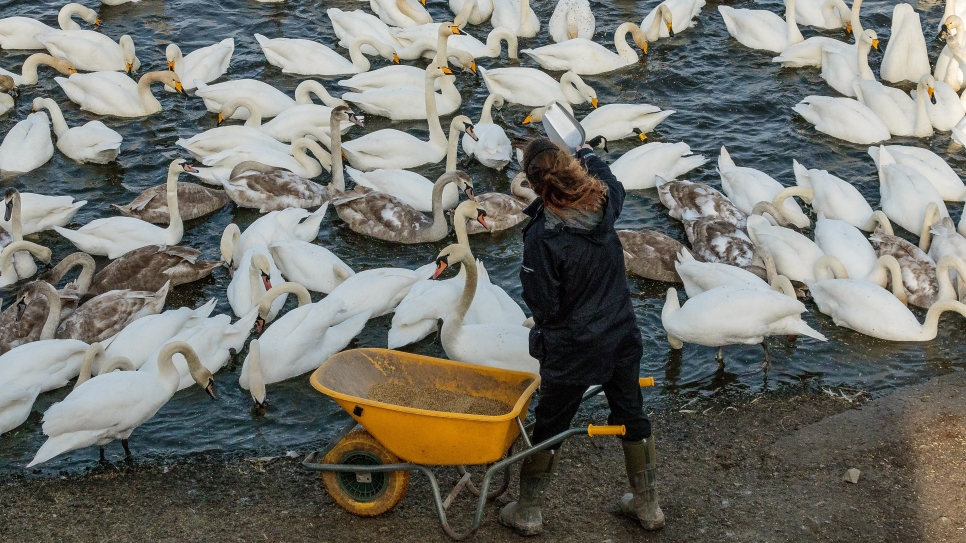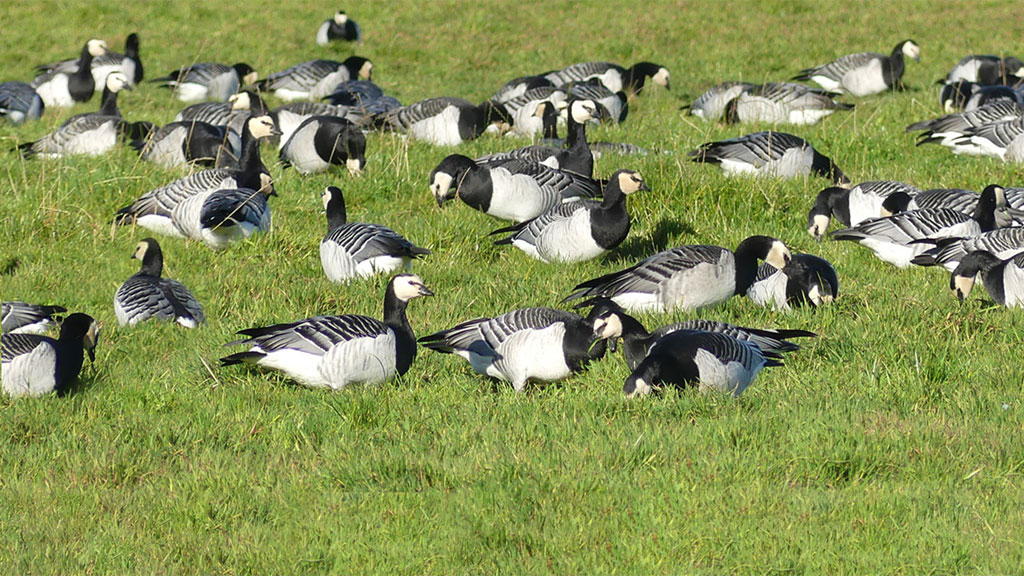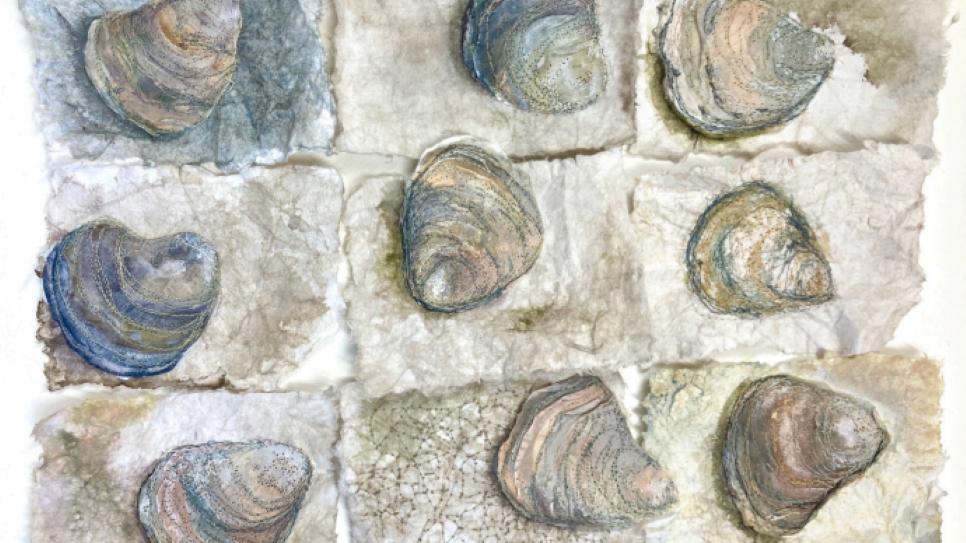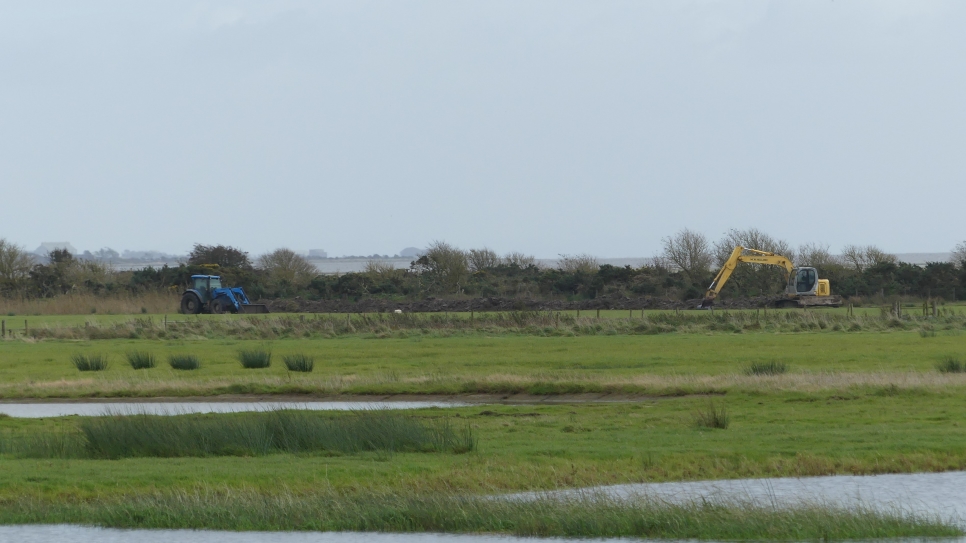Changing tides - discovering the zonation of the saltmarsh
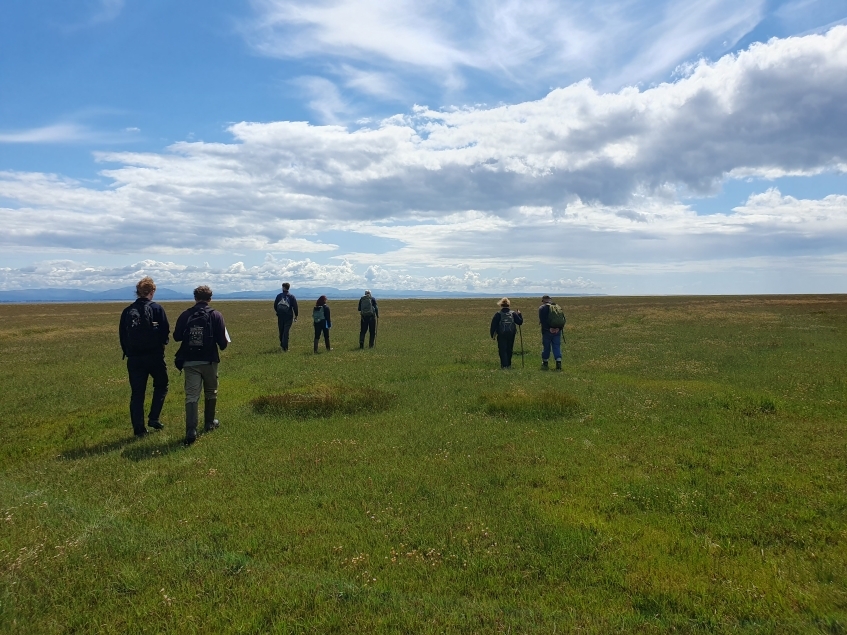
Standing at the edge of the saltmarsh, with the water ahead of me and Caerlaverock behind me, I’m awed by the expanse, by the horizon stretching away for what seems like forever (well, maybe not quite forever because I can definitely see Cumbria but still). I bend down and pick another bit of glasswort to chew on as the team gets called back together to go through what we’ve learned.
One of my favourite things about working at Caerlaverock is that there are always new opportunities to learn and do things I have never done before. Sometimes it’s sheep shearing, sometimes it’s falling in a creek on the merse. Today it was learning about the botany of the saltmarsh.
We start just over the fence from the fields where the cattle are grazing. Immediately the grass goes from being manageable to walk through to being thigh high and thick as you like. There are lots of familiar species here like meadow buttercups, thistles and soft rush. There are patches of bright purple tufted vetch and lemon yellow bird’s foot trefoil.
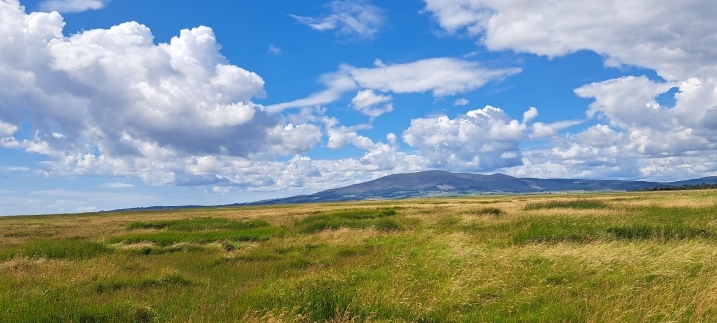 First part of the saltmarsh with more familiar vegetation, by Molly Waters
First part of the saltmarsh with more familiar vegetation, by Molly Waters
As we continue further out, we begin having to tread carefully, avoiding holes and creeks often hidden by long grasses, sedges and rushes. As well as the land changing, the kinds of plants we’re seeing begin to shift as well. There are more specialists out here because everything needs to be better adapted to the saltiness. These plants have to be able to tolerate the saltier earth as well as occasionally being submerged at especially high tides. The plants begin to be fleshier, more succulent, and mostly everything is shorter here. We’ve got sea plantain, sea arrowgrass, sea milkwort. Are you beginning to see the pattern? Did you SEA what I did there?
Lots of these species are vitally important food sources for wintering ducks, swans and geese who visit this area and this is why it is crucial that we know what is out here.
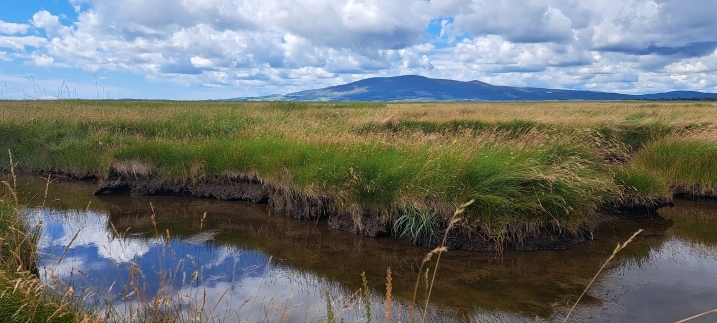 Creeks winding through the saltmarsh, by Molly Waters
Creeks winding through the saltmarsh, by Molly Waters
We continue walking, approaching the seaward edge of the saltmarsh. There begins to be more exposed mud and there are a few select species that we are seeing now: the pioneers. These hard core pioneer species will colonise the bare ground and their roots anchor the earth allowing for more species to move in over time. Here we see glasswort, annual sea blight and common saltmarsh grass.
Today I have learnt how to (mostly) not fall in a creek, that the zonation of a saltmarsh is extremely distinct and that glasswort makes a good snack when you don't make yourself a big enough lunch.
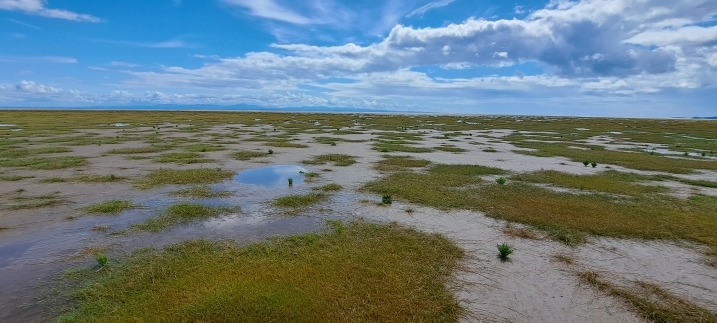 The scarcest zone of the saltmarsh, lots of bare ground only a small variety of species, by Molly Waters
The scarcest zone of the saltmarsh, lots of bare ground only a small variety of species, by Molly Waters
Written by Marianne Nicholson
Feature image of team on saltmarsh by Marianne Nicholson
